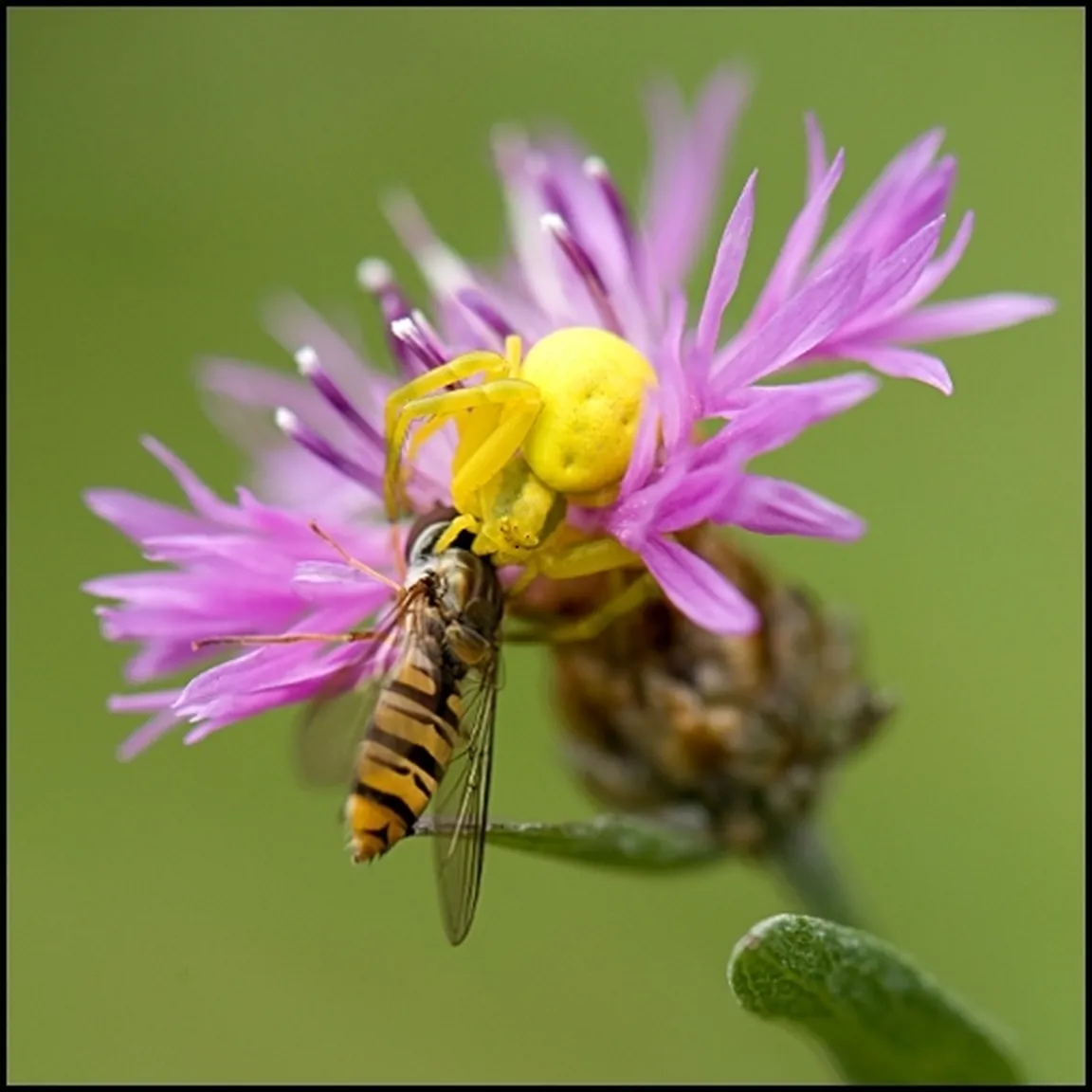Flower spider (Misumena vatia) reaches sexual maturity during the summer. It is a common inhabitant of sunny and warm places where there are enough blooming plants on which it hides. If we stop in a meadow, pasture, clear-cut area, or forest clearing and look at the flowers of plants up close, we will surely come across this species of spider, which likes to hide on white- or yellow-flowering plants.
The flower spider hunts its prey from ambush. It sits motionless on the inflorescence or flower and with its widely spread and forward-directed first pair of legs it waits for an insect that comes to the flower to seek sweet nectar. If it is fast enough it grabs it and eats it. The flower spider is a master of camouflage, as it can adjust the color of its body to the color of the substrate on which it waits in a couple of days, thereby increasing its chances of success in hunting.
The female flower spider is usually white, yellow, or greenish in color. Its body may also bear a pattern of reddish stripes. On the broad, egg-shaped, almost round abdomen there are three dimples arranged in a triangle. The body of an adult female is 9 to 11 mm long. The male flower spider is much smaller, measuring only 3 or 4 mm, and its coloration is not as variable. The male has a cephalothorax and the front pair of walking legs dark brown with pale spots, its abdomen is whitish with longitudinal dark brown stripes in the middle and on the sides.


